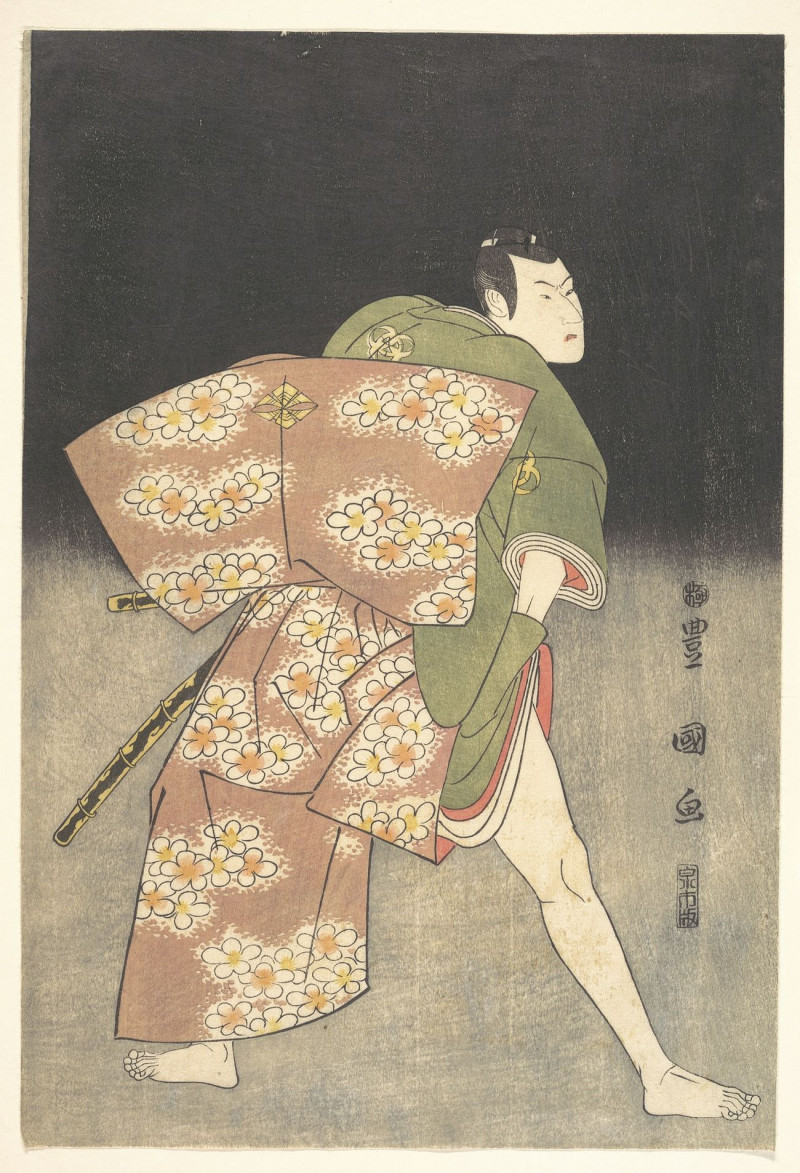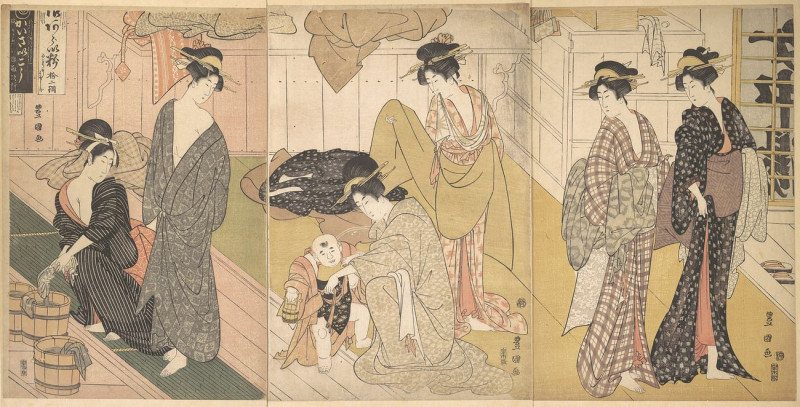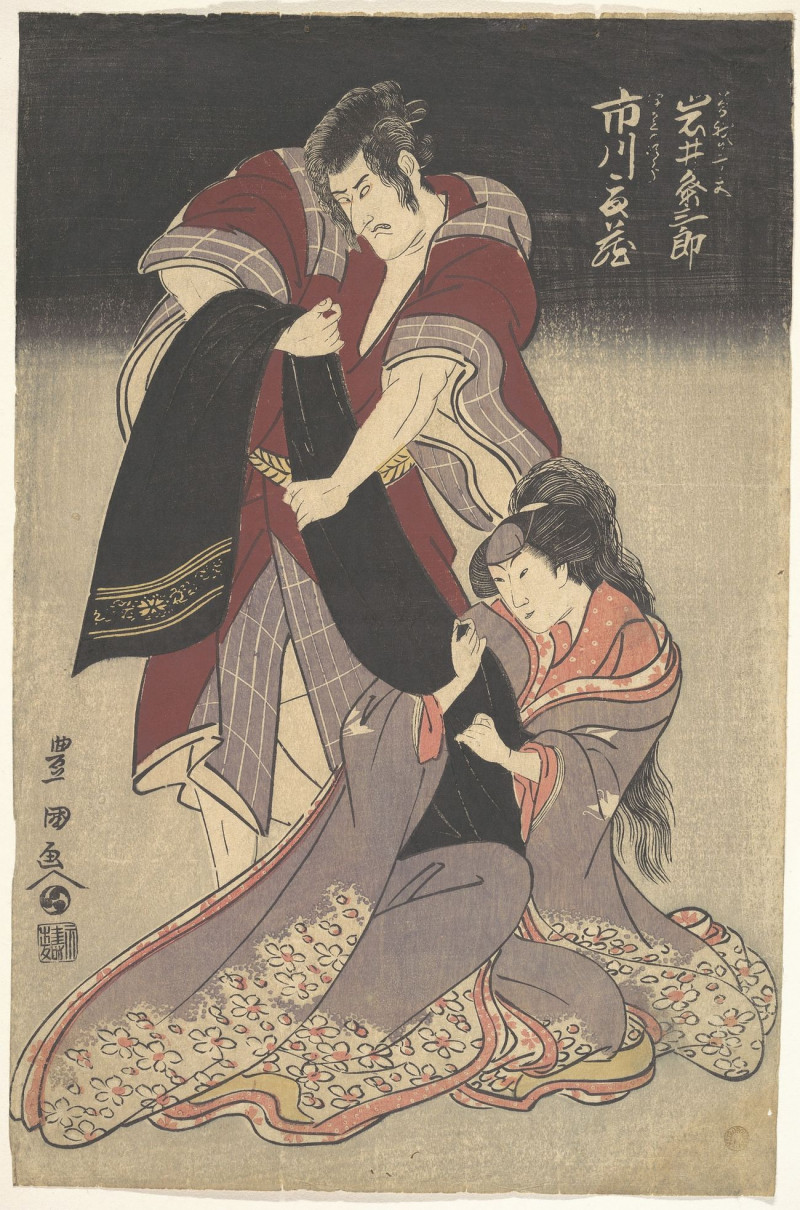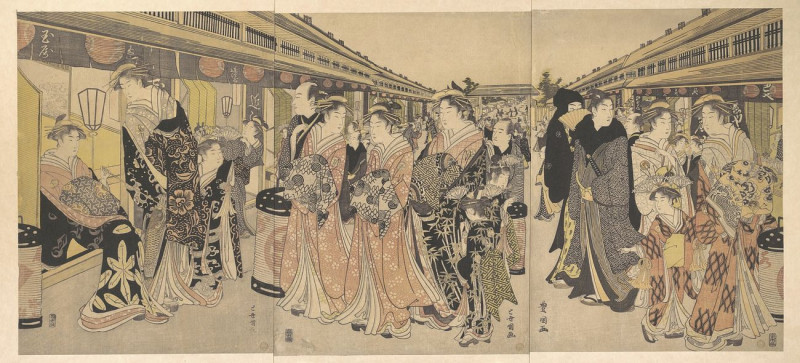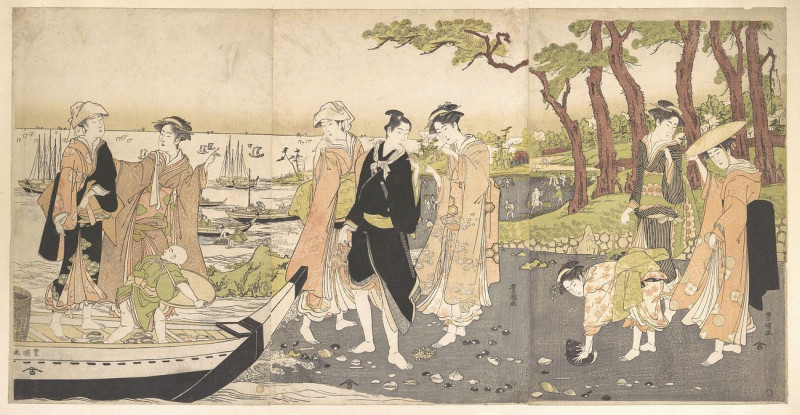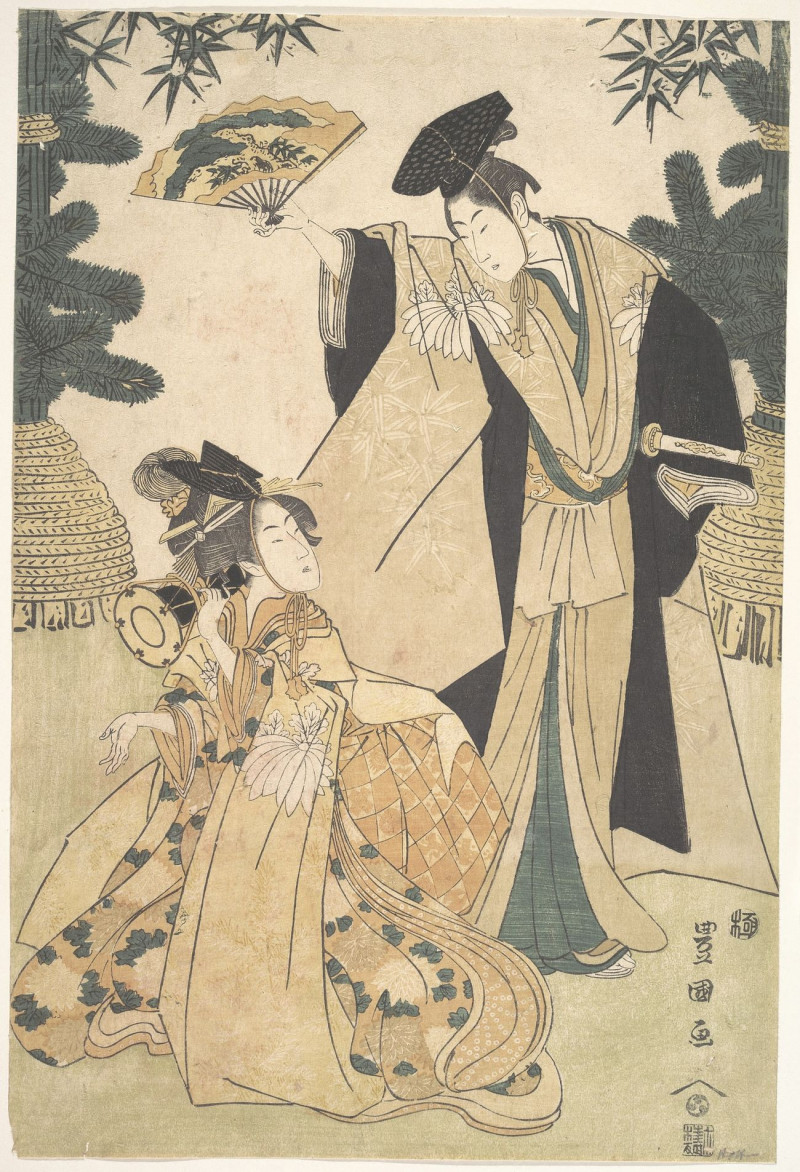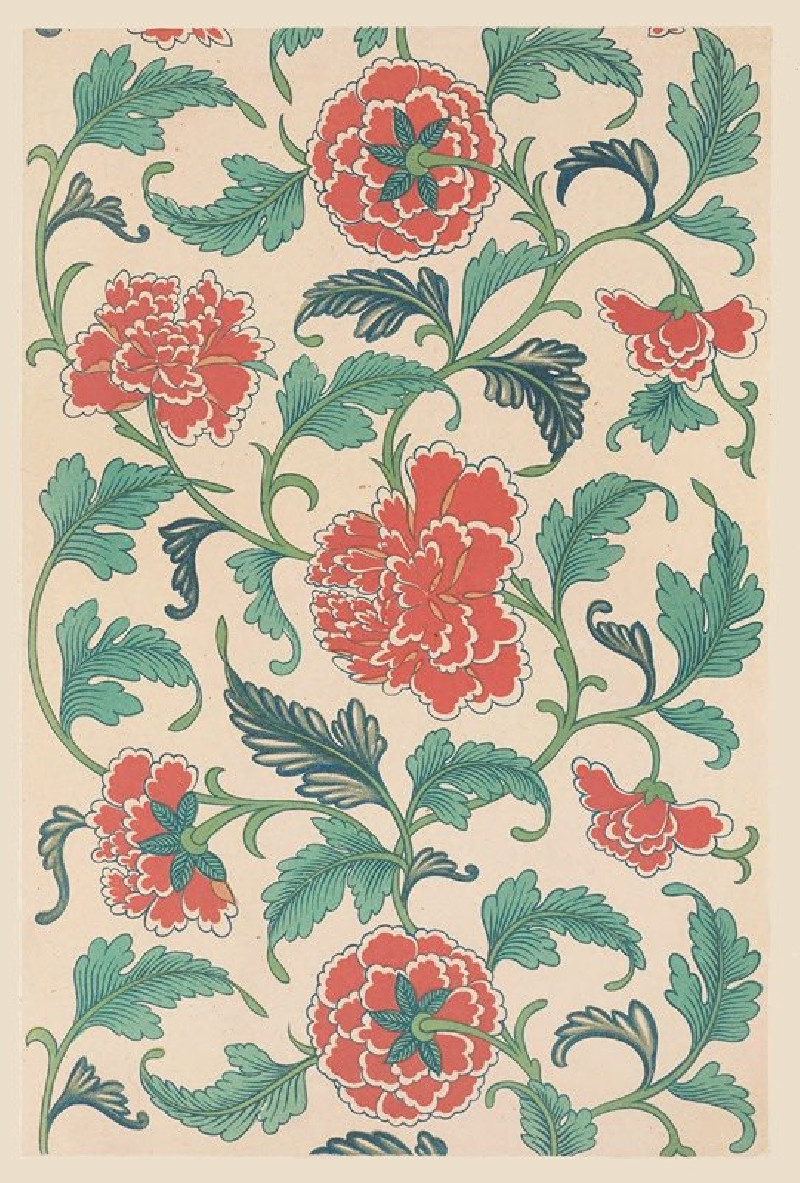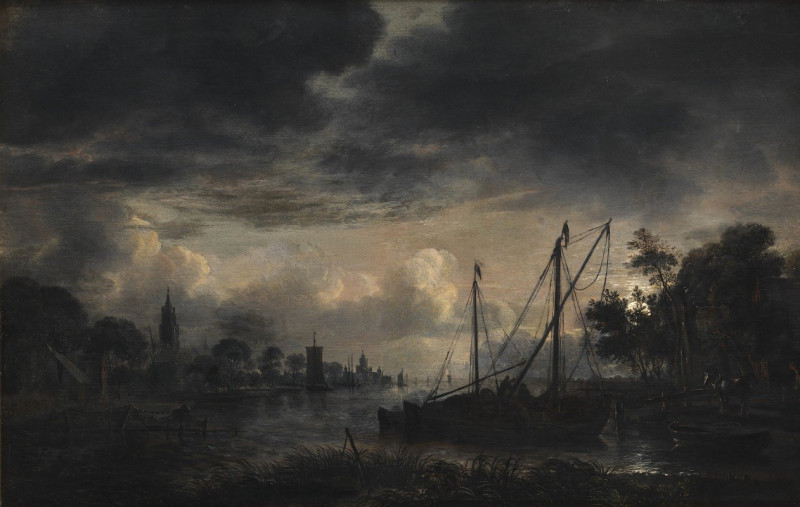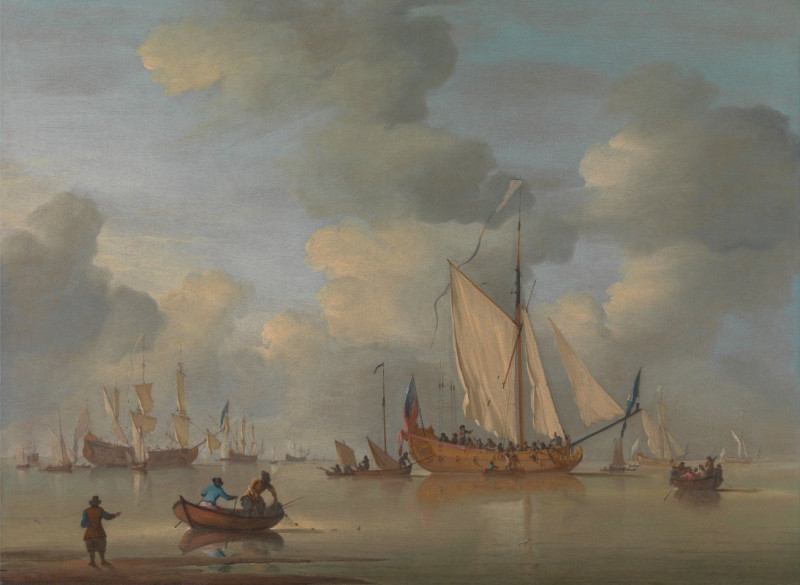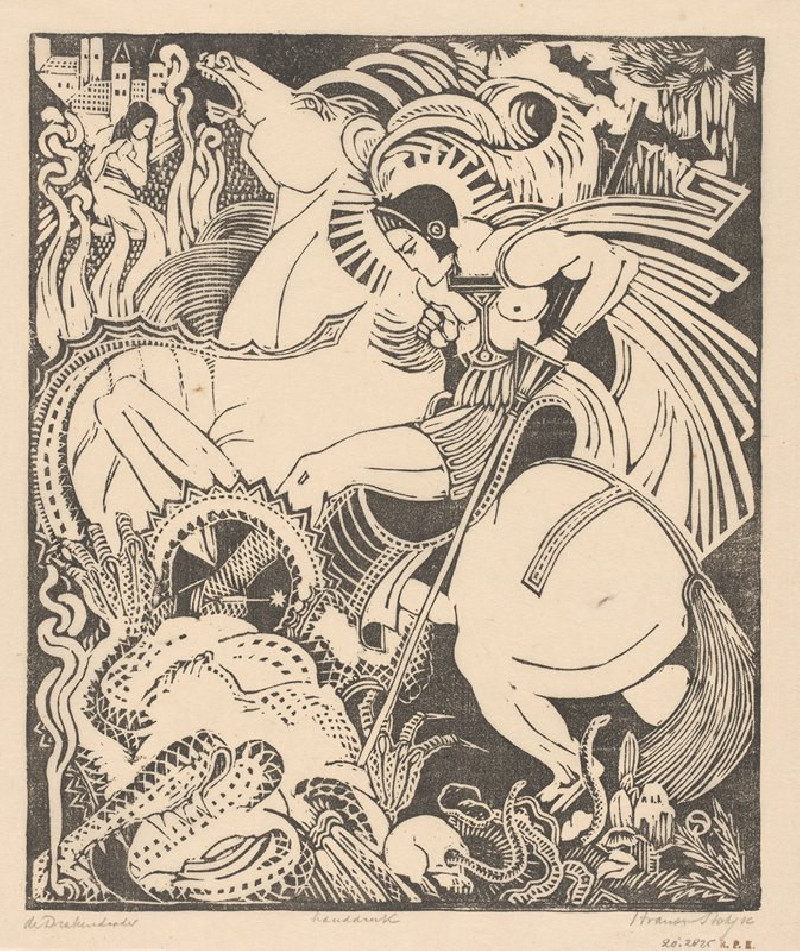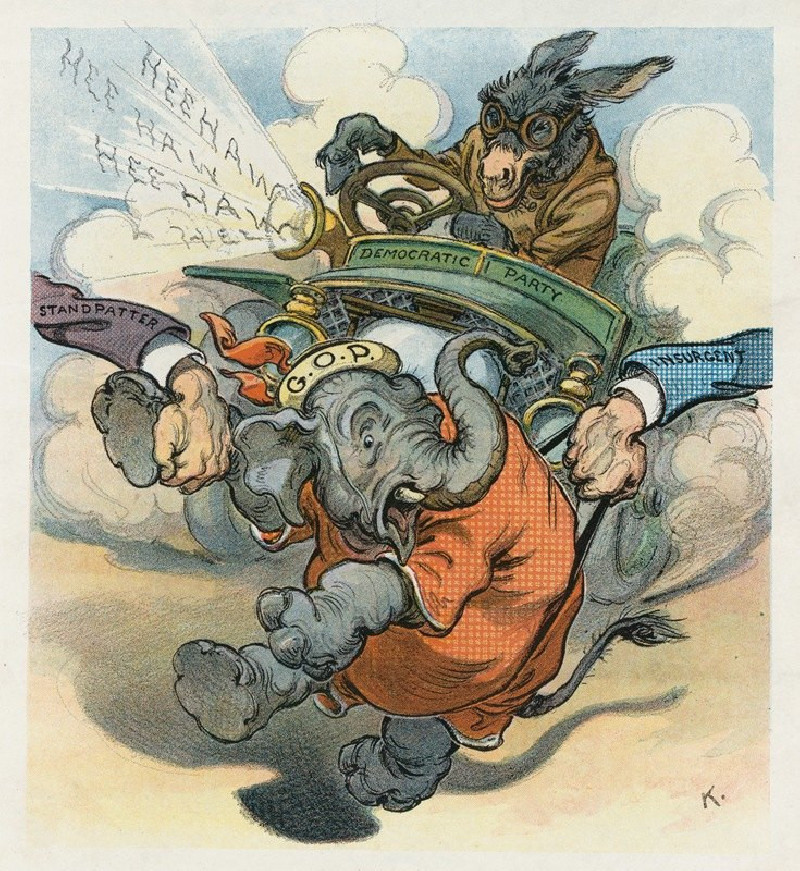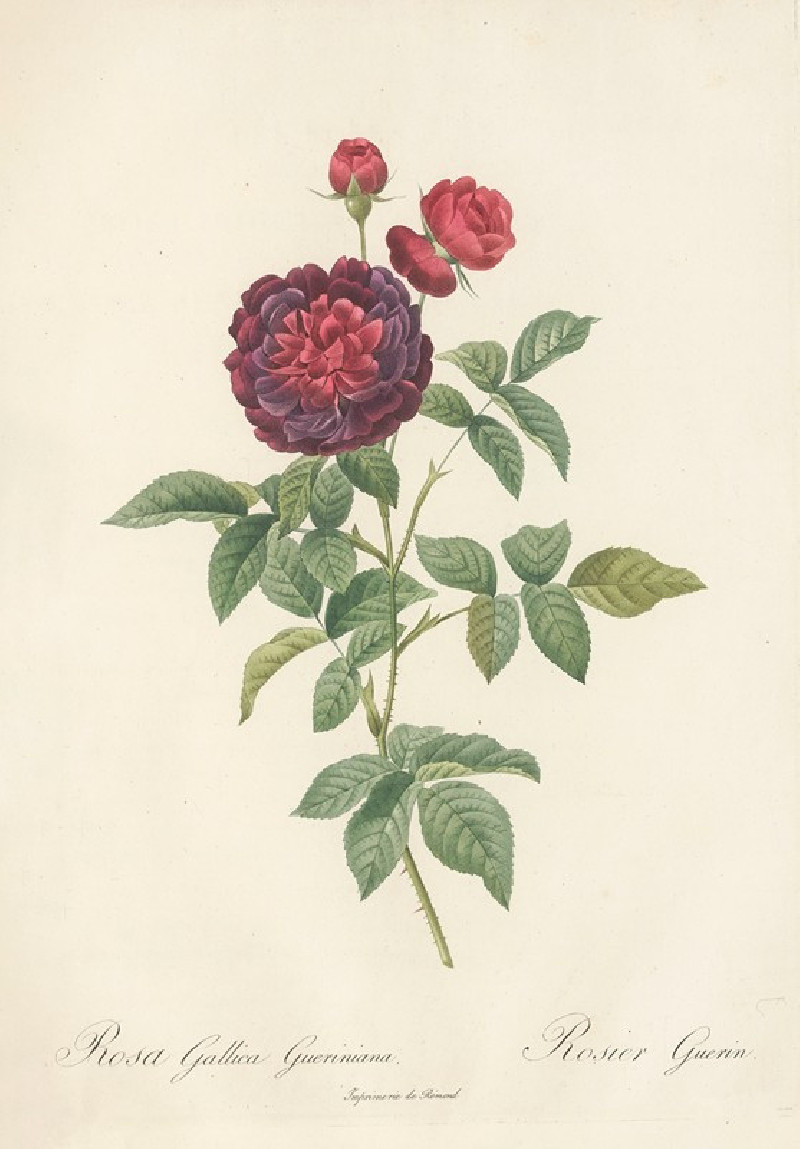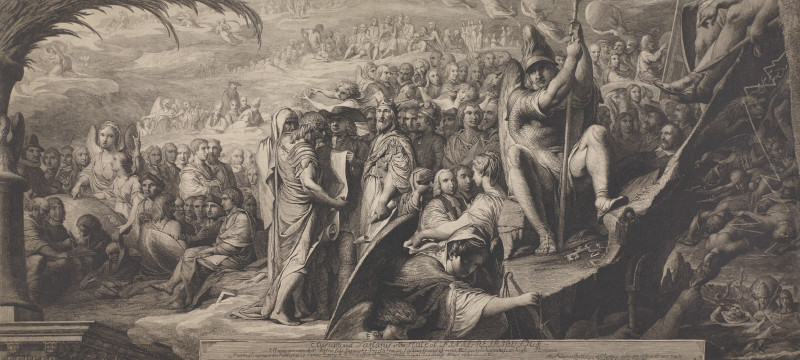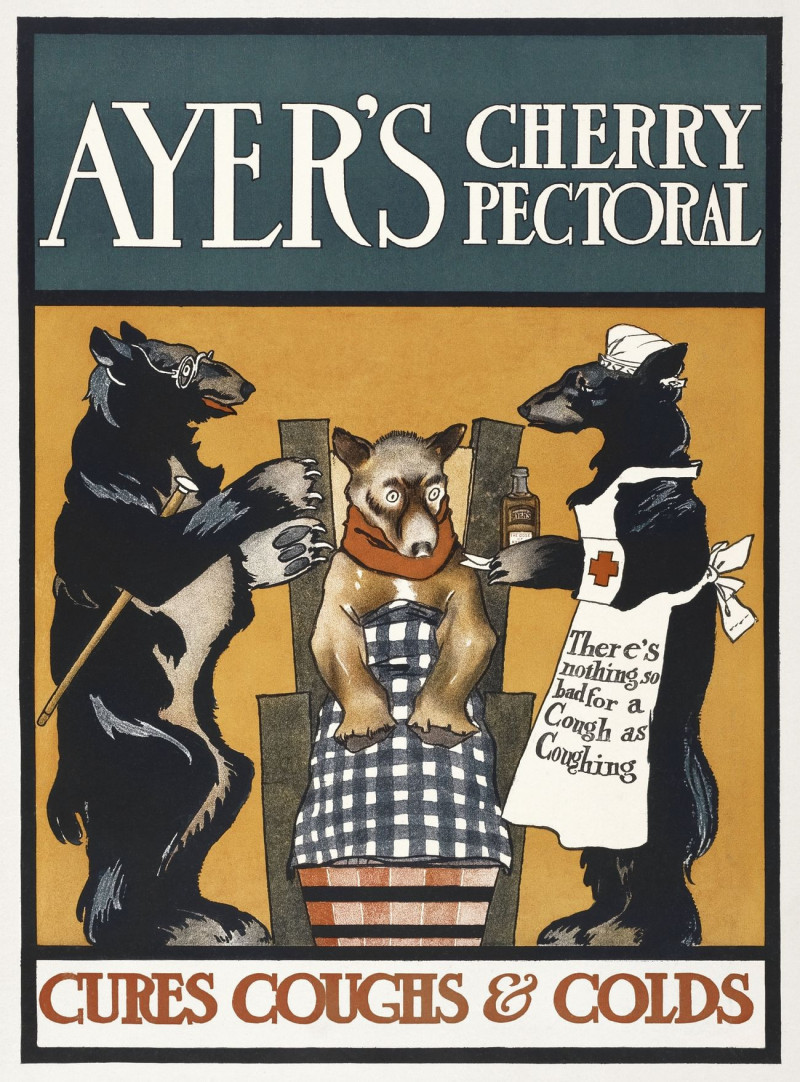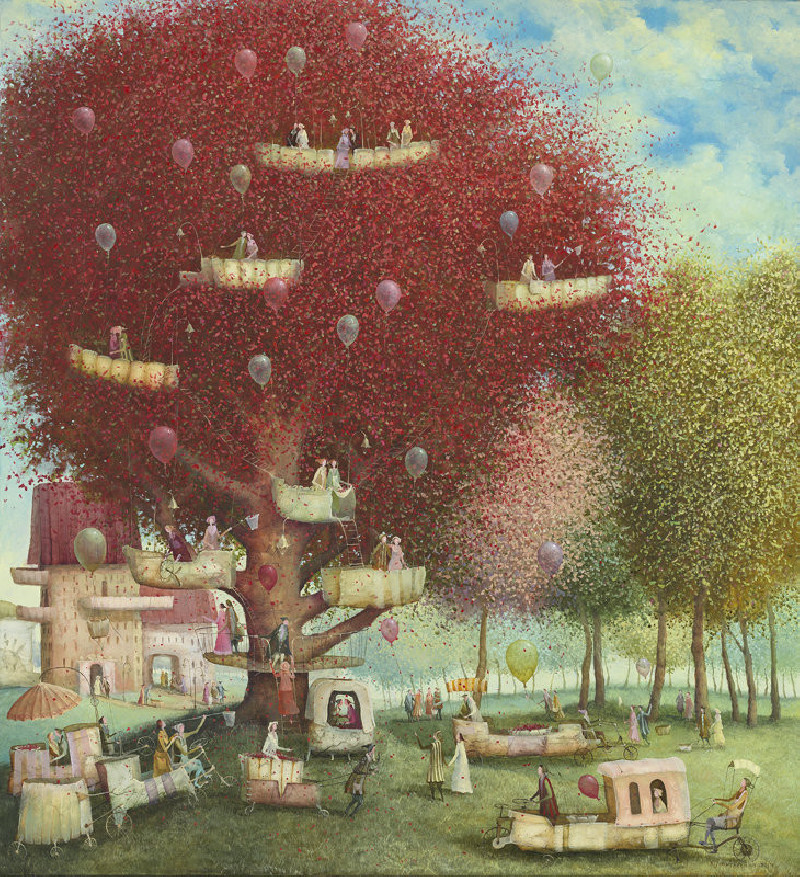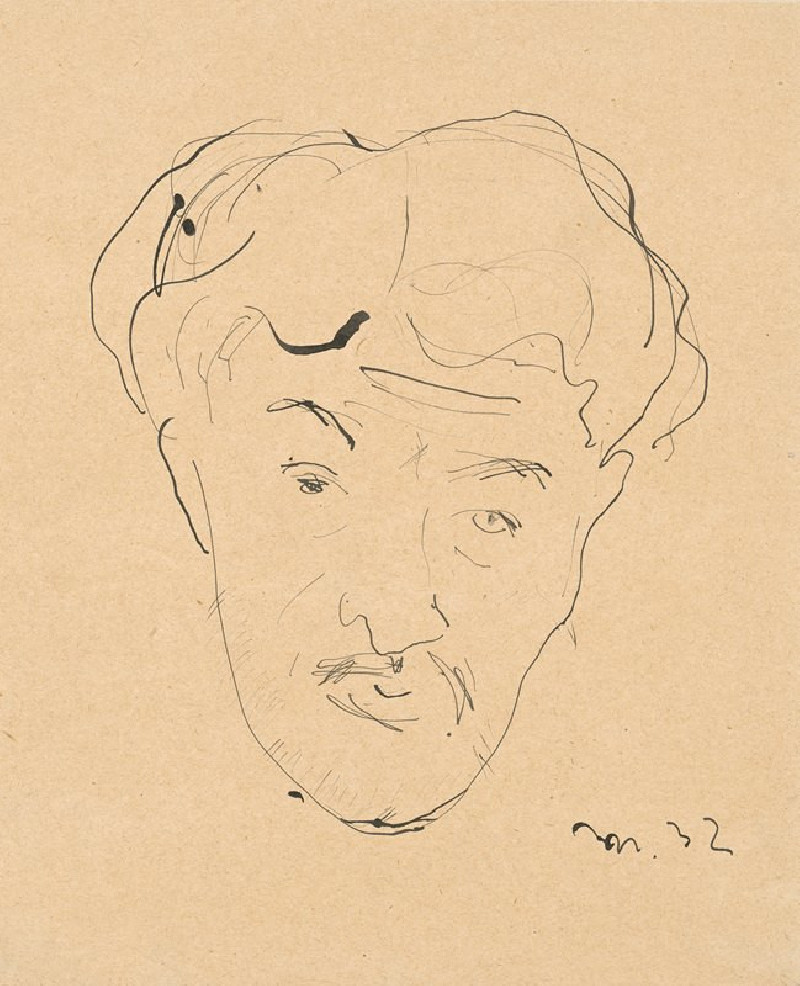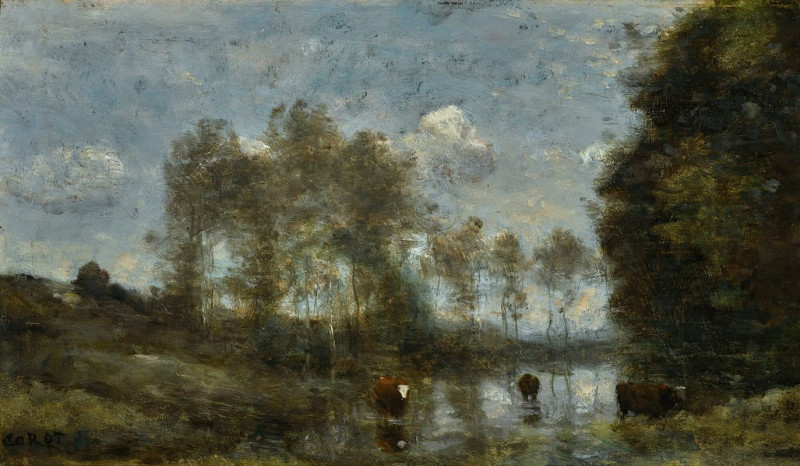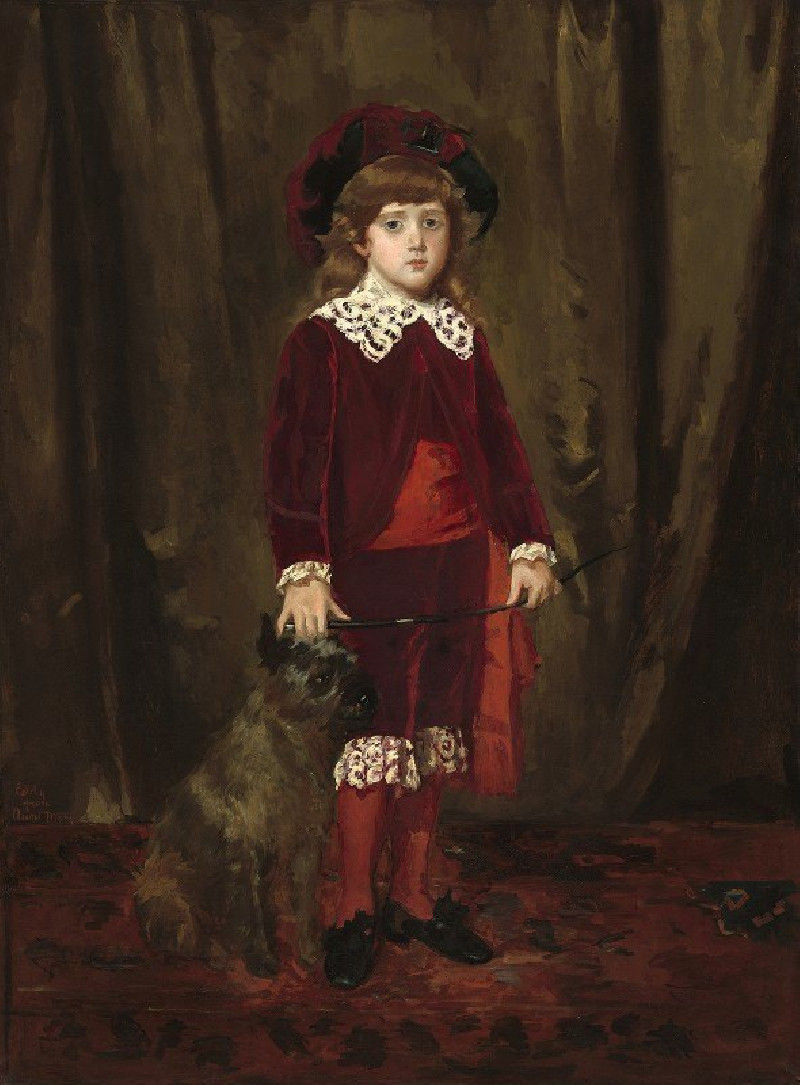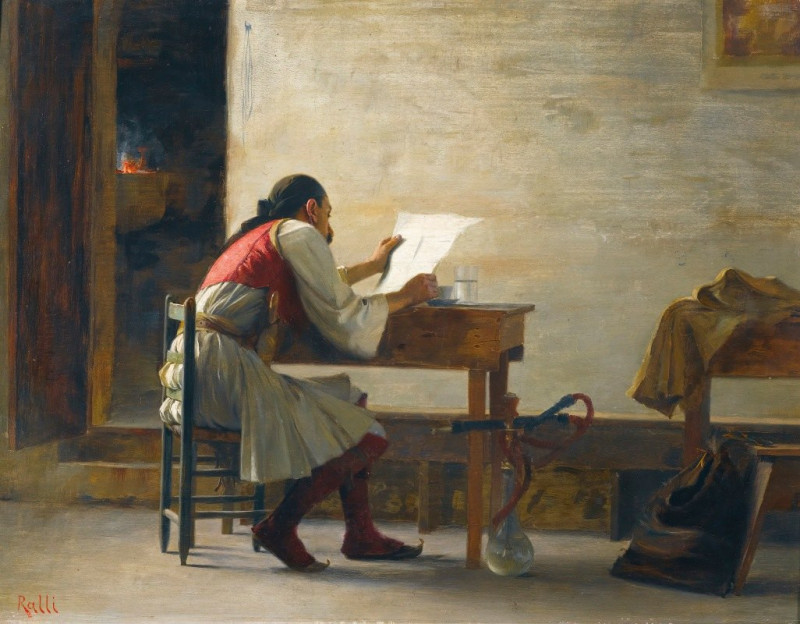Woman And Attendant
Technique: Giclée quality print
Recommended by our customers
More about this artwork
This painting by Utagawa Toyokuni, titled "Woman and Attendant," depicts a tender and detailed portrayal of two figures in traditional Japanese attire. The artwork reflects elements characteristic of the Ukiyo-e genre, known for its focus on figures from the "floating world" of Edo period Japan (1603-1868) which includes courtesans, Kabuki actors, and scenes of daily life.In the painting, we see two women, the primary figure and her attendant. The central figure, presumably a woman of higher social standing, is dressed in an elaborate kimono with detailed patterns and a subdued color scheme that speaks to her status and elegance. She has various traditional hair ornaments which indicate her sophisticated social rank. Her posture and expression convey a poised and serene demeanor.The attendant, in contrast, is depicted in a more relaxed and candid posture, indicating her subordinate role. She wears a simpler kimono and her hair is styled in a less elaborate way. She is holding a temari ball or a similar object attached to a string, suggesting an interaction or a playful moment about to occur between her and the woman she accompanies. The dynamic between the two figures is intimate yet defined by clear social roles.The composition extends vertically, typical of a Japanese scroll painting, and is set against a plain background that highlights the figures prominently.
Delivery
Returns
Utagawa Toyokuni (1769-1825) was a prominent Japanese woodblock printmaker and painter of the Edo period. Born in Edo (now Tokyo), he was the chief disciple of Utagawa Toyoharu, a well-respected printmaker. He specialized in kabuki theater prints, which depicted famous actors in performances and featured dramatic scenes from plays. In addition to kabuki theater prints, Toyokuni also produced portraits of geishas, landscapes, and scenes from everyday life. He eventually became a leading master of the Utagawa School.

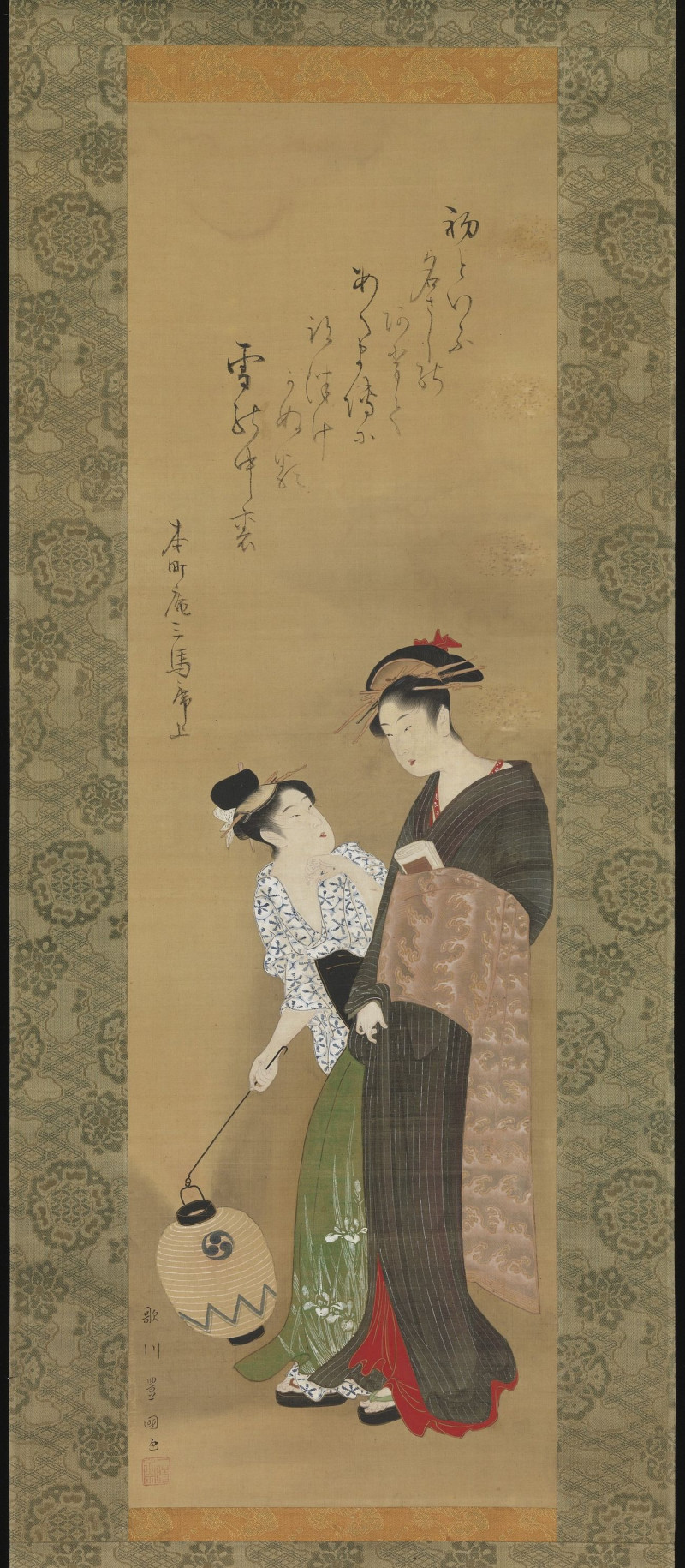
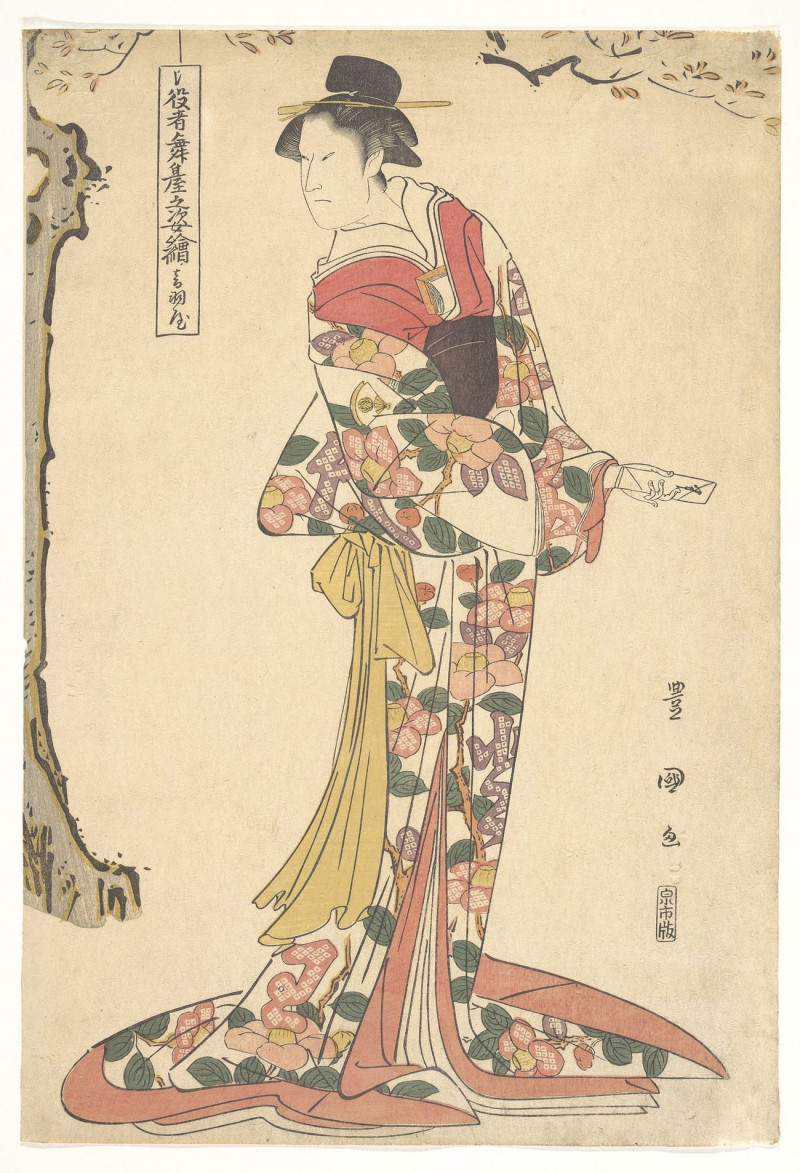
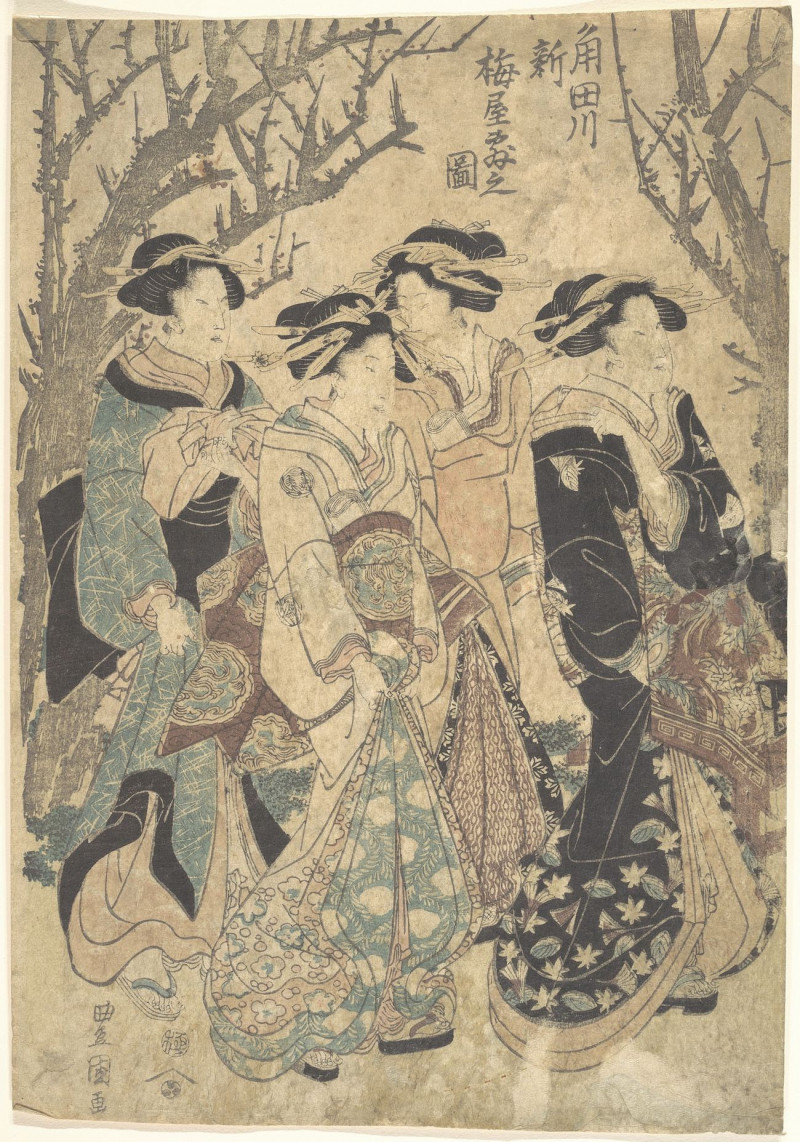


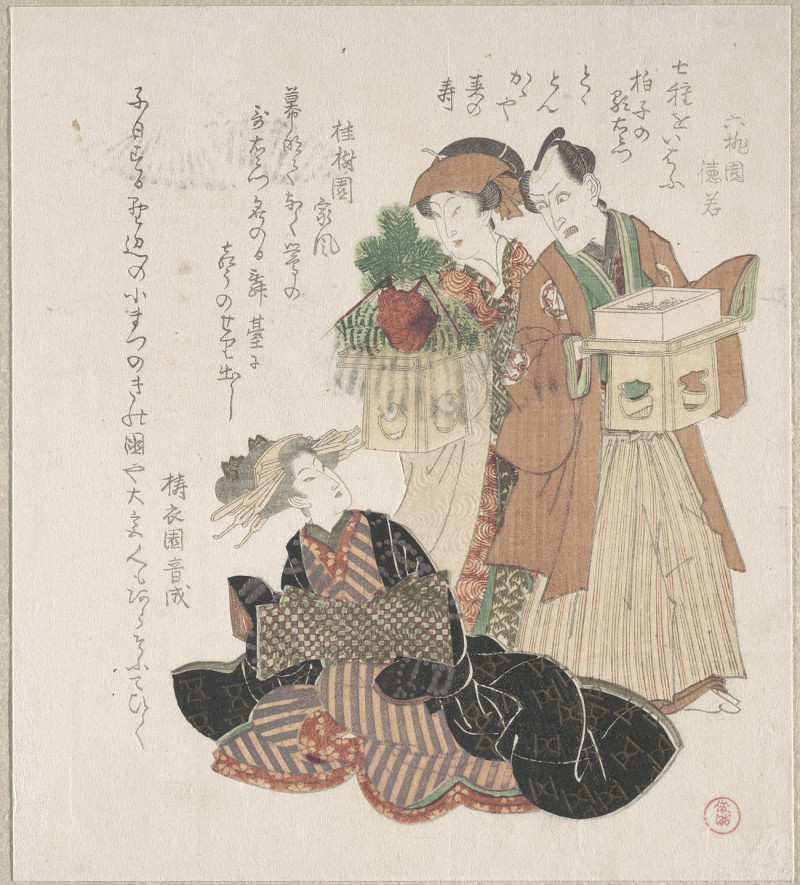
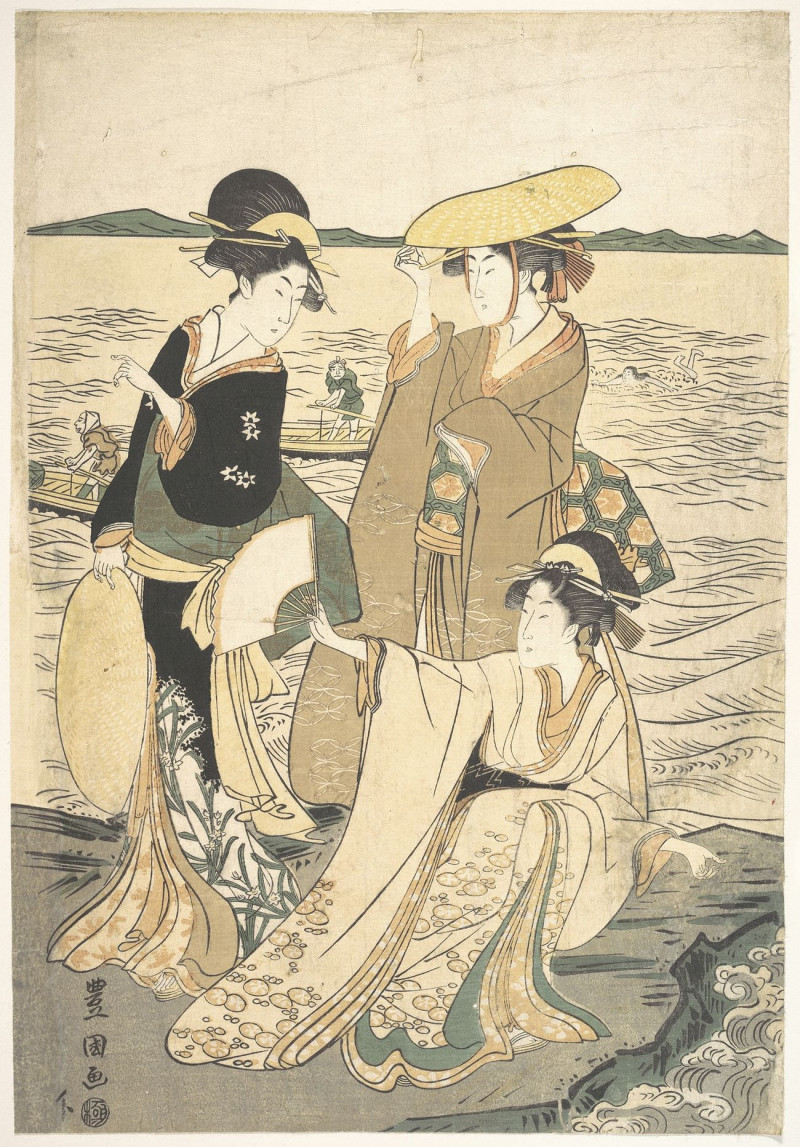
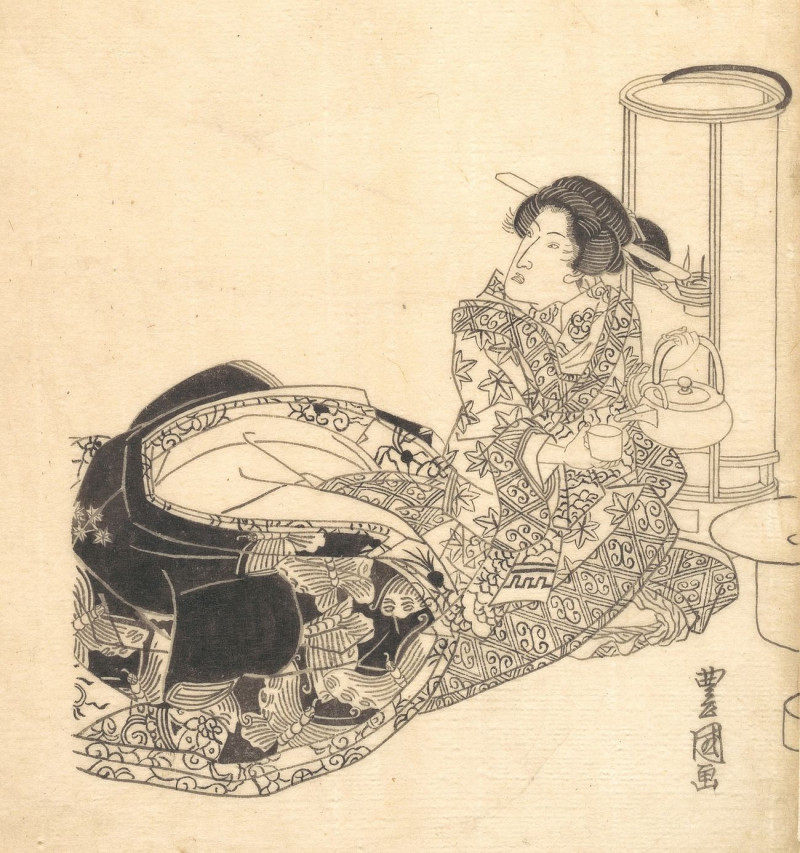

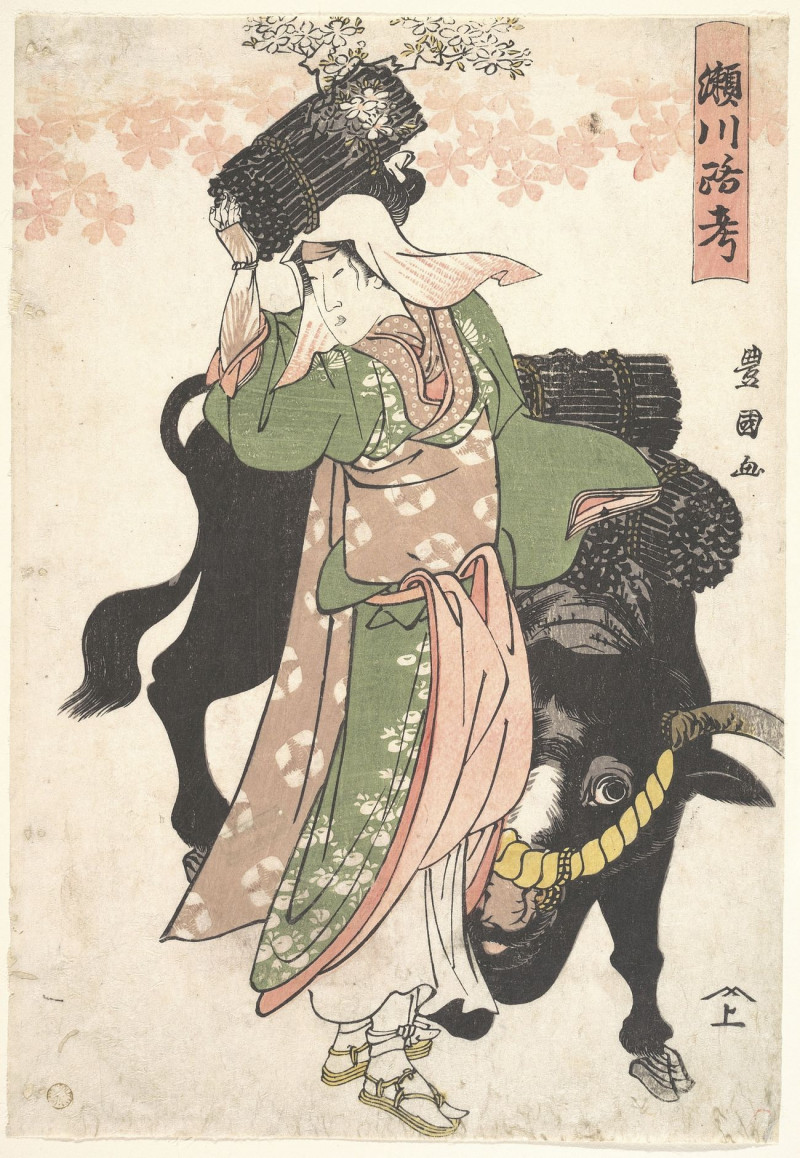
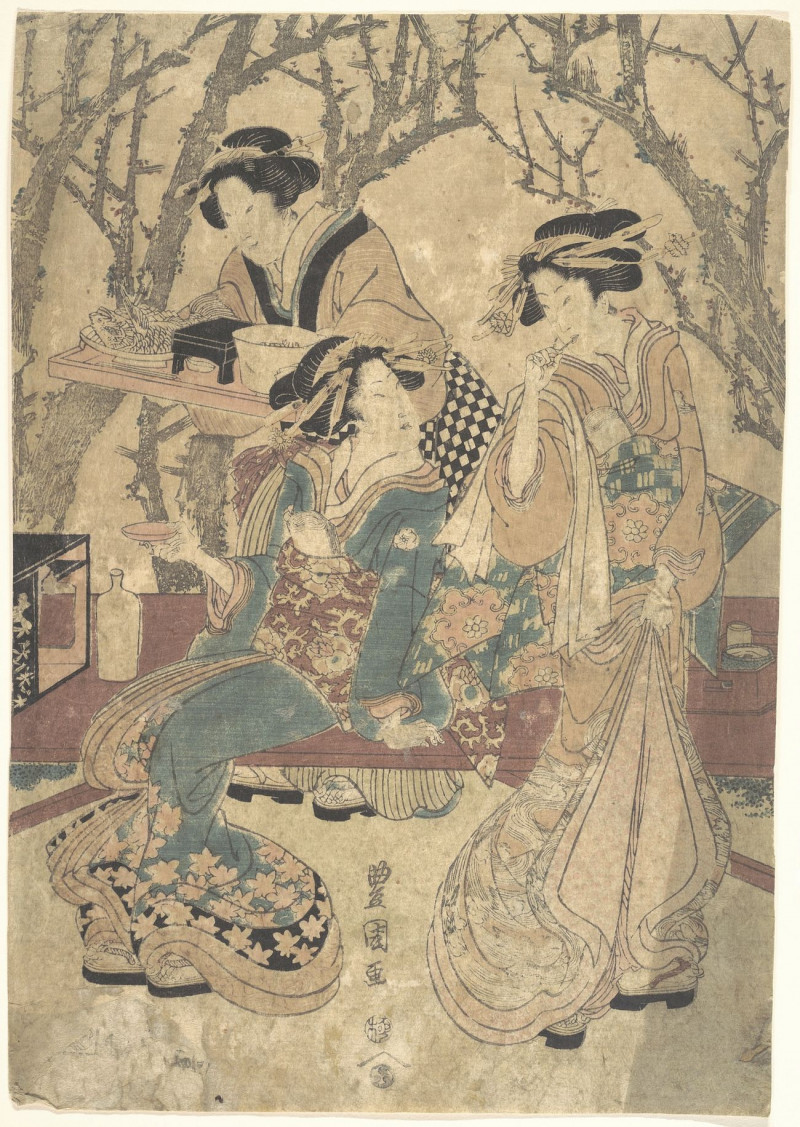
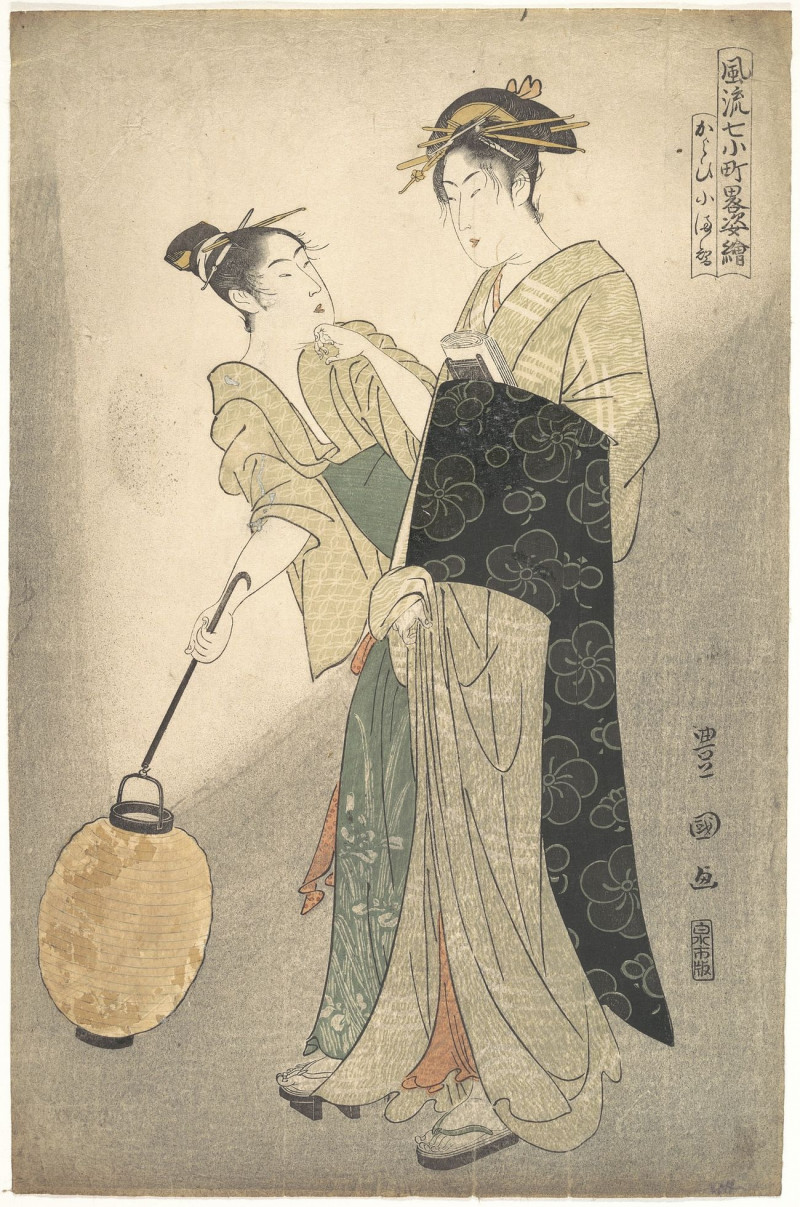

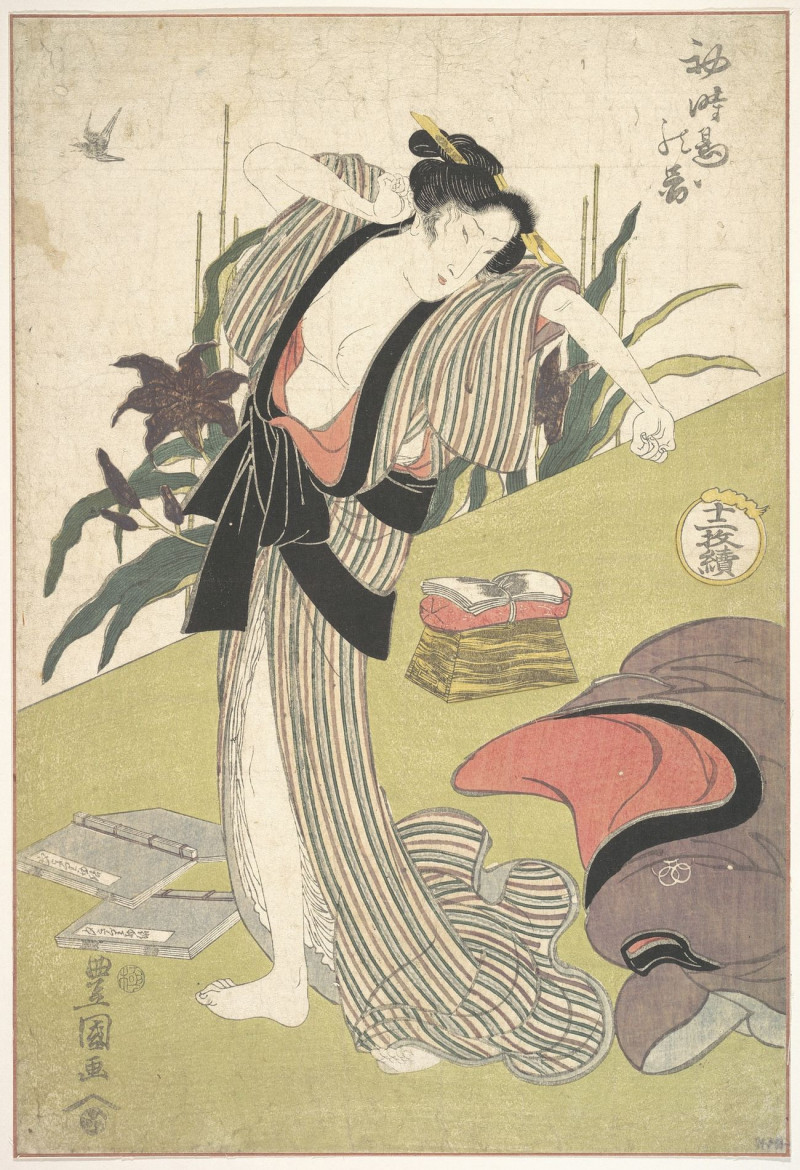

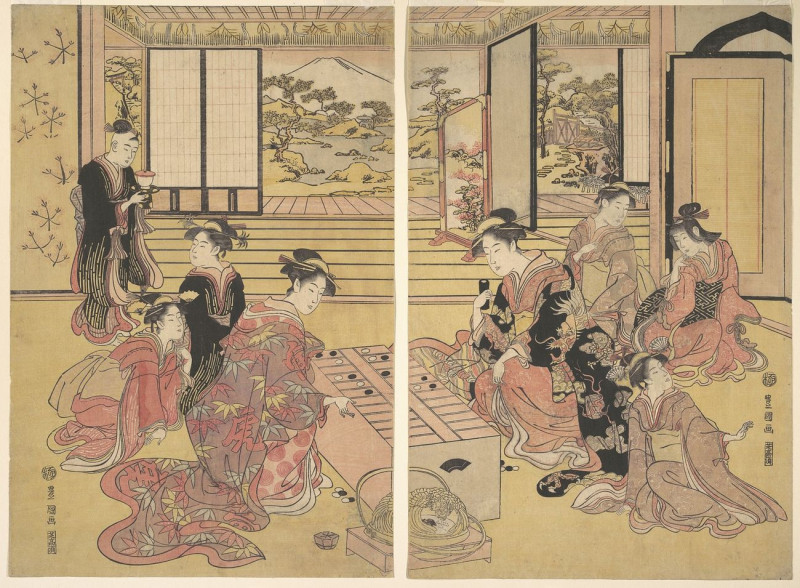

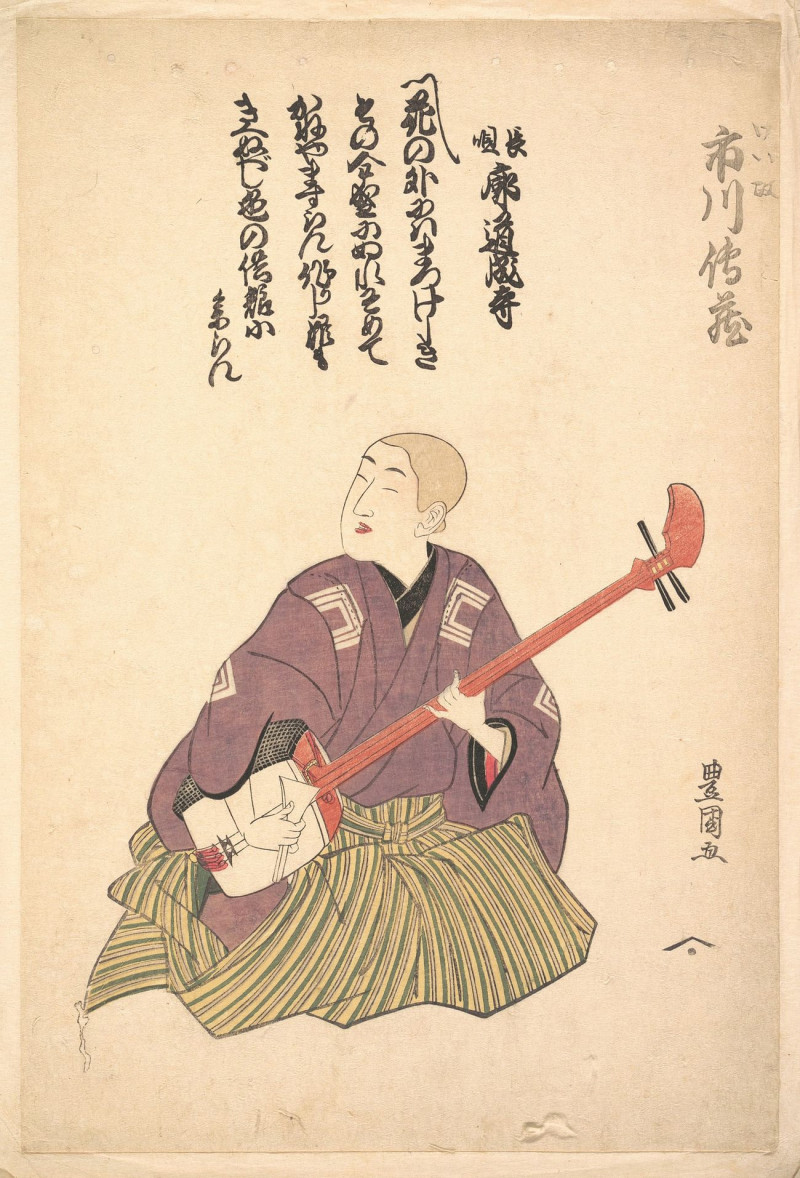

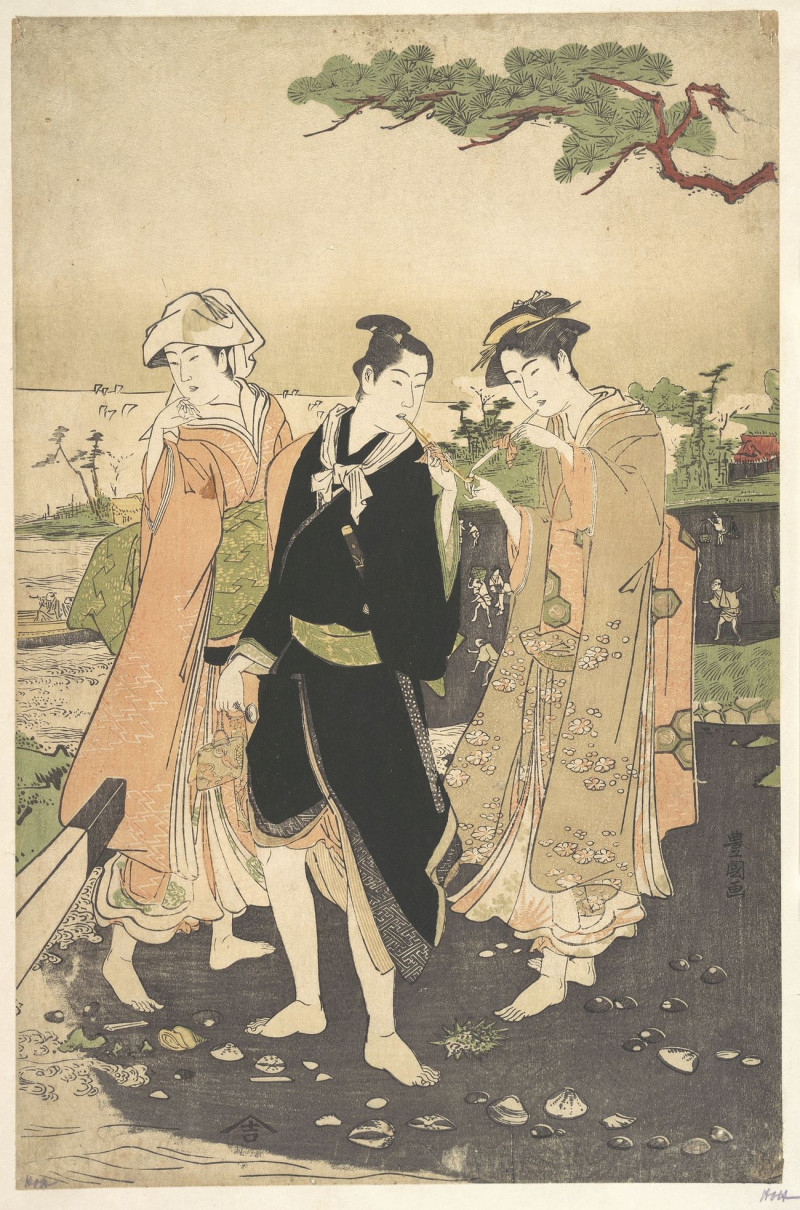

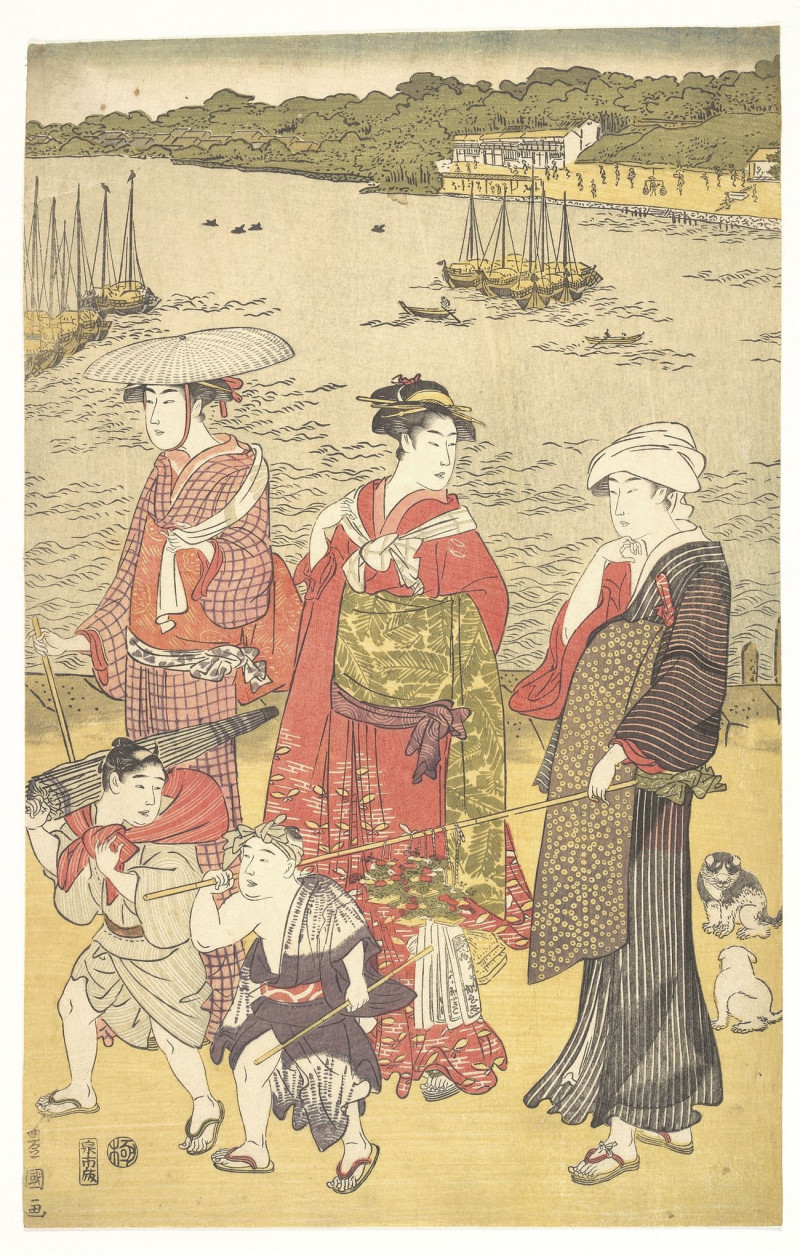
![Amusements Of Kabuki Actors Of The “Third Floor” [Dressing Room] reproduction of painting by Utagawa Toyokuni. ALL GICLEE PRINTS](https://reprodukcijos.lt/32918-large_default/reproduction-of-amusements-of-kabuki-actors-of-the-third-floor-dressing-room.jpg)
